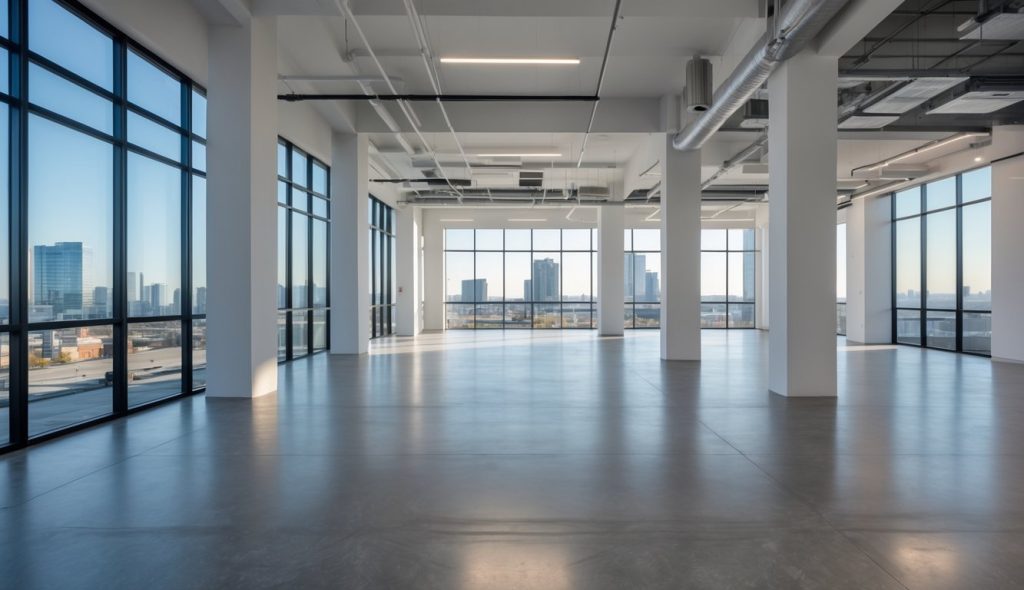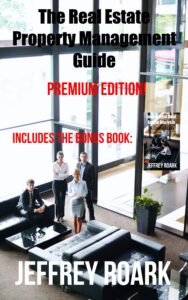Need to Lease Commercial Space?

Navigating the world of commercial real estate can feel daunting, especially with changing market trends and increasing paperwork. Whether you’re seeking to lease out your property or adapt to recent federal office space cuts, understanding commercial leasing is essential for making sound decisions.
Gaining confidence with commercial lease terms can help you protect your interests and maximize the value of your commercial property. By learning what tenants are seeking in a space and reviewing best practices, you will be better equipped to move forward successfully.
Key Takeaways
- Grasping key commercial lease terms is crucial for success.
- Understanding what tenants want helps attract quality occupants.
- Staying informed supports effective management of commercial properties.
Commercial Lease Terms You Should Know
Gross lease
In a gross lease, you pay one fixed monthly amount that covers your rent and most property expenses. This typically includes property taxes, insurance, and common area maintenance (CAM) fees. Gross leases are most common in office spaces and sometimes in retail properties. All building operating expenses are managed and paid for by the landlord, which can help you predict your monthly costs.
Net lease
With a net lease, you pay a base rent plus one or more additional expenses, such as CAM fees, property taxes, or insurance premiums. The structure can vary:
- Single Net (N): You pay property taxes.
- Double Net (NN): You pay property taxes and insurance.
- Triple Net (NNN): You pay all three—taxes, insurance, and CAM.
Net leases are common in industrial, retail, and certain office properties. More detail about these terms can be found at this commercial lease terms guide.
Triple net lease
A triple net lease (NNN) shifts nearly all expenses—property taxes, insurance, and CAM—onto you as the tenant. You’re responsible for most operating costs related to the building. This type of lease is widely used for stand-alone retail, office, or industrial buildings; details are described in this overview of commercial leasing.
Percentage lease
In a percentage lease, you pay a base rent plus a percentage of your business’s gross income. These leases are most typical in shopping centers and retail spaces, where tenant sales volume significantly impacts occupancy cost. The landlord often covers central services, while you handle many property-related expenses. A helpful summary is available in this guide on commercial lease terms.
Types of Commercial Tenants

You will encounter several primary types of commercial tenants when leasing out space. Each tenant type comes with its own lease expectations, business needs, and relationship with the property.
| Tenant Type | Common Lease Length | Typical Uses |
|---|---|---|
| Retail Businesses | Short to Medium Term | Restaurants, cafes, boutiques |
| Office Tenants | Short, Medium to Long Term | Administrative offices, service providers, co-working |
| Industrial Tenants | Long Term | Warehousing, manufacturing, storage |
- Retail businesses value foot traffic and visibility. They often prefer flexible lease terms due to the potential for relocation or changing markets.
- Office tenants typically secure longer leases, seeking stability for operations and staff.
- Industrial tenants require specialized spaces for storage or production and frequently sign the longest leases due to limited availability in the industrial property sector.
Commercial real estate brokers can help you identify tenant types best suited for your property and market. Your approach to tenant selection should match your investment goals and the specific demands of your commercial space.
What Tenants Look for in a Commercial Space

Size and use restrictions
When searching for retail space for lease, industrial property, or office space, the allowable size and use are often non-negotiable. Zoning laws may limit how you operate your business, set boundaries on what activities are permitted, or even restrict specific uses within coworking spaces. Before leasing, review all local regulations and permitted uses thoroughly to avoid issues that could disrupt your operations.
A quick checklist of what to verify:
- Zoning permissions for your business type
- Maximum allowable square footage
- Approved uses within the space (e.g., manufacturing, services, retail)
Location
Location plays a crucial role in the success of your business. Whether you want high-visibility retail space or a quiet office for coworking, consider how accessible the space is for employees and clients. Take into account factors such as parking, proximity to public transportation, and the reputation of the area.
Additional considerations include:
- Foot traffic levels for retail tenants
- Proximity to business partners or clients
- Expected area growth: is the location likely to become more valuable, or less, in the coming years?
- Local amenities and services nearby
For more on finding tenants for your commercial space, see strategies for marketing shared office space.
Rent
The cost of rent is always front of mind. Be clear about the base rent as well as any extra expenses, such as utilities or common area maintenance. Tenants should understand:
- What is included in the monthly payment
- Which expenses—like property taxes or building insurance—are additional
- If the lease uses a net, gross, or modified gross structure
Transparent communication avoids surprises and helps tenants plan their budgets effectively.
Lease length
Lease length directly impacts your flexibility and business planning. Many commercial leases range from 3 to 5 years, but some businesses—especially startups or those exploring coworking spaces—may prefer shorter commitments. When negotiating, balance your need for security with the tenant’s need for adaptability.
Key points to discuss:
- Standard lease terms in the area
- Options for renewal or early termination
- Whether the lease can grow with your business needs
Frequently Asked Questions

What are the initial costs involved in leasing commercial property?
You can expect several upfront costs when leasing commercial space. These may include a security deposit, the first month’s rent, and sometimes the last month’s rent. Additional costs often arise, such as application fees, legal fees for reviewing the lease, and costs for improvements or build-outs that you may need before occupying the space.
It’s important to review your lease for any additional upfront charges, such as common area maintenance (CAM) fees or insurance requirements.
What should I consider when choosing a location for commercial leasing?
When selecting a location, you should evaluate the following factors:
- Proximity to your target customers or clients
- Accessibility for employees and deliveries
- Visibility and signage opportunities
- Zoning regulations and local business ordinances
- Parking availability and nearby amenities
Choosing the right location can directly influence your foot traffic, operational costs, and long-term business growth.
How is commercial lease pricing typically determined?
Commercial lease pricing depends on several variables, including the property’s size, location, type, condition, and the local market demand. Landlords may use price per square foot per year or per month as the primary metric.
Additional costs such as maintenance fees, utilities, and property taxes can be included in your rent or billed separately depending on the lease type. For more details, this guide to leasing commercial space discusses how lease costs are structured.
What are the common types of commercial leases and their differences?
The most common types of commercial leases are:
| Lease Type | Tenant Pays | Landlord Pays |
|---|---|---|
| Gross Lease | Fixed Rent | most or all expenses |
| Net Lease | Rent + some expenses (e.g., taxes, insurance) | varies per lease |
| Triple Net (NNN) | Rent + property taxes, insurance, maintenance | usually none |
| Modified Gross | Rent + some expenses, often negotiable | varies |
Each lease type affects your budget and responsibilities differently.
What are potential disadvantages of leasing instead of buying commercial space?
Leasing offers flexibility but also has drawbacks:
- Lack of property ownership means you don’t build equity
- Lease renewals may include significant rent increases
- Restrictions on property modifications or signage
- Potential risk of nonrenewal by the landlord
- Less control over neighboring tenants or property management decisions
Evaluate these factors carefully versus the financial commitment of buying.
How can I negotiate the terms of a commercial lease agreement effectively?
Effective negotiation starts with understanding your needs and the market. Consider these steps:
- Research comparable properties and current market rates.
- Identify which lease terms are negotiable, such as rent, build-out allowances, lease duration, and renewal options.
- Request clarity on all extra costs (e.g., maintenance, taxes).
- Get legal review of the lease document before signing.
- Don’t hesitate to ask for tenant-friendly clauses or concessions.
For more advice, review this step-by-step commercial leasing guide.
Ever wish you could analyze properties like the pros?
Save time and make smarter investment decisions with the most powerful real estate analysis software on the market.
Enter the code BESTDEAL at check out and receive a 20% Off Discount!

Master the art of real estate investing with The Real Estate Property Management Guide: Premium Edition – your comprehensive roadmap to successful property management.
Whether you’re a novice investor or seasoned professional, this guide covers everything from selecting the right investment properties to tenant management and property marketing.
The author, Jeff Rohde writing as Jeffrey Roark, is a professional with over 25 years of real estate experience. This Premium Edition includes the valuable bonus book Investment Real Estate Analysis: A Case Study to help you identify hidden opportunities and evaluate properties like a professional.
Learn practical, actionable strategies for both residential and commercial properties, from single-family homes to office buildings and shopping centers.
Don’t just buy property – learn how to manage it successfully and maximize your investment potential.
Grab your copy now from your favorite bookseller:
- Amazon (Basic Edition, does not include Investment Real Estate Analysis: A Case Study)
- Books2Read for Apple, Barnes & Noble, Kobo, Scribed, and 8 more sellers with both eBook and paperback options available ((Premium Edition, includes Investment Real Estate Analysis: A Case Study)
- Payhip as a downloadable PDF (Premium Edition)
Ready to take your business to the next level?
- Subscribe to our newsletter
- Visit the learning center
- Learn more about our consulting services